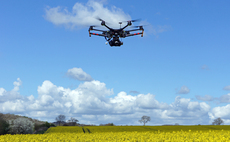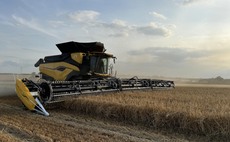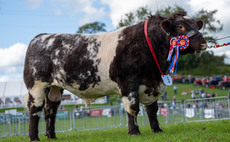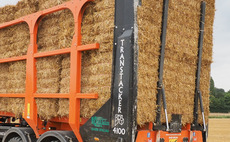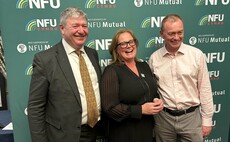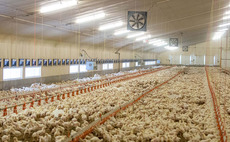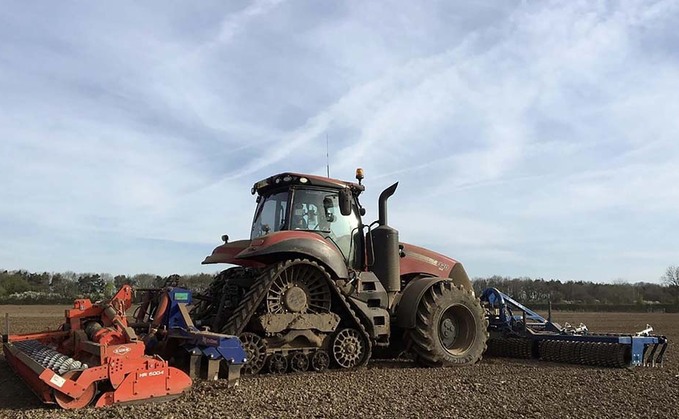
Like getting your money’s worth? A Warwickshire farming business is deploying high power tracklayers for a wide range of jobs, reports Jane Carley.
Brinklow Biogas is a diversified farming business which includes quarrying and renewable enterprises alongside 1,100 hectares of crops near Coventry, Warwickshire.
Founded by Tony Aston, the business is now run by sons Dale and Mark, and in 2015 the opportunity arose to build a digester, with 500cu.m per hour biomethane plant and 500kW generator. Maize and energy beet are among the crops grown on-farm to fuel the production of energy.
Dale says: “We’ve designed the plant for gas-to-grid to overcome storage issues and we’re looking at an application for the carbon dioxide that is exhausted in liquefaction for the food industry, which would make us low carbon or carbon neutral, while surplus electricity that is generated could be used for hydrogen production in the future.”
The family’s interest in other businesses meant that tractors needed to work hard in the limited hours available to them, hence high horsepower machines have been used from the start.
High capacity
“The first was a second-hand FW60 in the 1980s. Then came a 9380 Quadtrac in 2004 and although its main use was for heavy draft work, I also used it to pull a high capacity muck spreader to spread compost from our green waste recycling site onto the land. We soon learned that getting the right design on larger machinery was key and we still use high horsepower tractors for this, coupled to Bunning spreaders,” he says.
With the commissioning of the biogas facility, it became clear that new equipment would offer more reliability and, shortly after, one of the first Magnum Rowtracs to be sold in the UK, a 340 CVX arrived on-farm. One important modification to the 340hp tractor was to swap the standard 30-inch track frame for 24in.
“This means that I can use either 24in or 18in tracks on the same frame, with a choice of 710 front wheels or, in row crop format, 380s. We use it predominantly on the 24in tracks, but the option of a narrower footprint allows work between maize rows with an inter-row hoe and digestate application between the rows, while still at low ground pressure,” says Dale.
On 24in tracks, the Rowtrac is used with an umbilical slurry boom, carrying the reel on the front linkage.
“It’s more power than this job needs but it’s a tractor we’ve got, so a tractor we will use. Other key jobs are ploughing on land, including with a flail on the front linkage to terminate cover crops in a one-pass operation.”
He adds the Rowtrac is a good tractor for top work, making seedbeds for maize and beet used as feedstock for the digester, the CVX gearbox giving infinite control of forward speed. It is kitted out with a six-metre press up front, Watkins subsoiler toolbar and 6m power harrow.
“Subsoiling immediately behind the tractor and ahead of the power harrow takes out the wheelings, again reducing passes.”
Maize drill
Timing is everything, so if the farm’s wheeled Magnum 380 CVX is tied up with top work in spring, the Rowtrac will also do a stint on a 12-row Vaderstad maize drill. The Rowtrac’s 3m roading width also comes into the equation when deploying tractors, Dale says.
“We’d looked at spigoted duals on the Magnum, but they were hard to fit, so we’ve imported 1,100mm wide low side wall tyres from the USA on wheels specially made by �ļ�ֱ�� Tyre. It makes the tractor 3.5m wide so this can favour the Rowtrac.”
Other duties include tillage with a 4m Horsch Terrano and even clamp rolling with a buckrake on the front linkage and Silopacker at the rear, and on one occasion handling a 9m triple mower.
“We’ve stuck with Case IH for several reasons including the service offered by dealer Startin Tractors which can provide the technical backup for non-standard options as well as precision farming support.
“They have fitted and set up the latest RTK steering and telemetry systems since we first purchased the tractor. The on-site technicians have also been very helpful which has been a major factor in keeping everything running as it should when we have been under pressure.”
Dale adds that safeguarding lone workers is a major benefit of telemetry, along with easier management of the fleet. He has also used it to study the fuel consumption with different implements, leading to a change of plough brand that saved 10 litres of fuel per hour.
Over the years, a range of tracklayer brands and layouts have been trialled on-farm.
“We’ve identified several advantages with sticking to Case – the lug drive puts 100% of the power to the tracks, which are automatically hydraulically tensioned. Rubber mounting absorbs shocks and the position of the large front idler, slightly higher than the three central idlers, means that it pulls itself on top of the soil rather than dozing into it. The oscillation of the track also ensures that it maintains contact on turns.”
Twin track systems were considered and rejected as Dale suggests the four points of contact from two wheels and tracks allow turns under full power without scuffing and maintains straighter tracking in slippy conditions.
“Another benefit of the four-point design is I can use a front linkage to increase versatility, which I don’t believe is possible with a twin track,” he adds.
The John Deere 8RX was of interest, but is not currently available in a comparable horsepower with a CVT transmission, while the lower cost of the Rowtrac was also a consideration.
Value for money
“We looked at both 380 and 340 Rowtrac models at the time of purchase,” Dale says, “but for the cost of the extra horsepower, we could substitute the RTK system which is of more benefit. It’s generally good value for money – there’s a big step up in price between the Rowtrac and Quadtrac.”
The opportunity to fix costs is another consideration, with 4,000 hours/four years, plus the option to extend, offered as a manufacturer’s warranty by Case IH, rather than a third-party one.
Dale has only one niggle, being the track bearings. Rather than being sealed for life, these have sight glasses, which require crawling under the tractor to inspect.
So, what is on the shopping list for the future?
“The ideal would be to go all CVX, so to swap the existing Quadtracs and Rowtrac for a pair of Quadtrac CVXs, although it would need a specialist aftermarket front linkage for use on the clamp with a maize blade and one downside is the lack of front pto.
“We’d keep the Magnum to work on the chipper, but the priority is probably to replace the Pumas first as they are the tractors doing the most roadwork. The jump in machinery costs in recent years is a big concern, however, so it’s not an immediate decision as the current fleet is proving very reliable.”

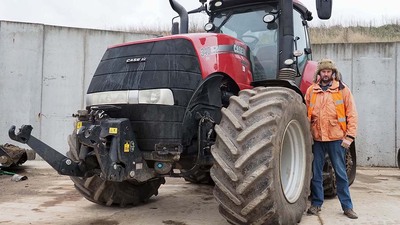
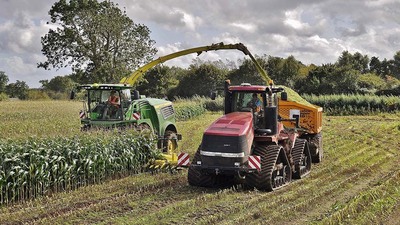

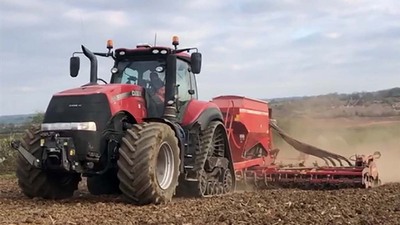
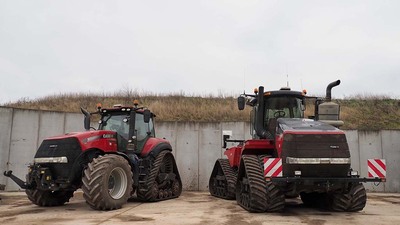
The Brinklow Biogas Fleet
- Four Case Puma CVX 240s – mainly for crop haulage; 2017 models with 7,000 hours on them. Fitted with industrial tyres for Roadwork and Agribumpers, an additional aftermarket safety device specifically to prevent ‘climb over’ in the event of a road accident
- Two JCB Fastrac 4220s – mainly for crop haulage. Driver comfort, four-wheel steer and full suspension are their advantages but they are considerably underpowered compared to the Pumas, says Dale Aston
- Magnum CVX 380 wheeled tractor, 650 front and 900 rear tyres as fitted; 650 front and 1,100 low side wall option. 2,800 hours. Also has a reversible seat for operating the crane on a Musmax-trailed woodchipper
- Case Rowtrac 340 CVX 2016, 4,000 hours
- Quadtrac 9380 for power harrowing/subsoiling
- Quadtrac STX 500 2013 model with 8,300 hours and Quadtrac 600 with 4,000 hours: power harrow/subsoil 10f mounted plough
- Case Axial Flow combine – fitted with maize header
- John Deere 9900 forager




